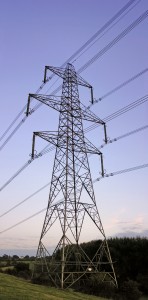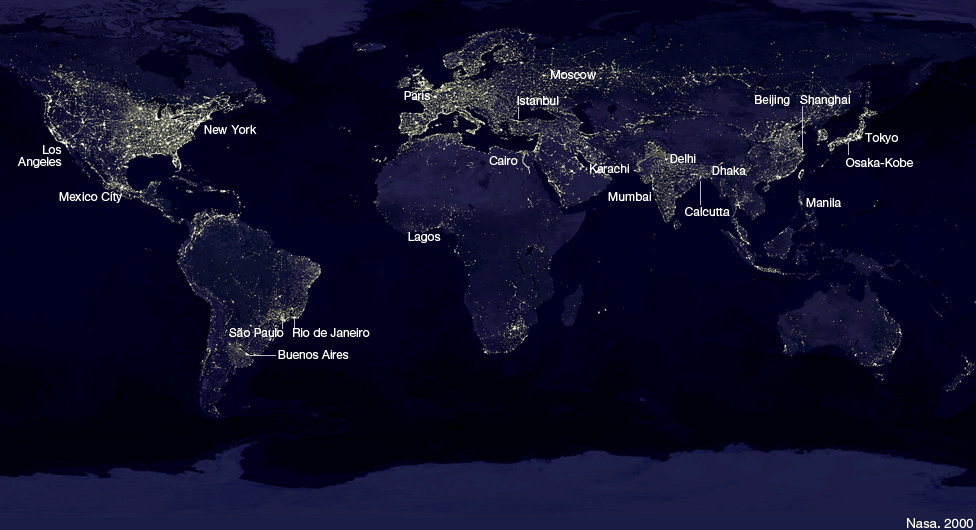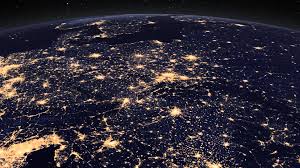Let there be light–24/7
Aside from the occasional power outage when we drag out the candles, oil lamps and flashlights, we take the light between dusk and dawn for granted.
On “All Things Considered” Friday, the Planet Money team interviewed Jane Brox, the author of “Brilliant: The Evolution of Artificial Light.” Brox cites research done by Yale economist Bill Nordhaus who researched the cost of artificial light through the centuries.
I had a driveway moment listening to the story. Do check out the full interview (and I plan to find the book). Here’s a tantalizing takeaway: back about 4,000 years ago in Babylonia, a day’s labor could buy maybe 10 minutes of artificial light. Through the millenniums, making light remained expensive and labor-intensive, and the light produced was not very effective.
Until about 1800, not a whole lot of substantive progress. For example, whale oil was one of the best sources of lamp fuel. Not a particularly attractive solution: smoky, fuzzy and there’d be no whales left today if we kept that up.
In the mid-1800s, a big breakthrough: kerosene produced from coal or oil providing reasonably high-quality light for humans to keep busy long after dark. A day’s labor now buys about five hours of post-dusk light.
Once the power generation and distribution challenges were worked out, the use of electricity, of course, revolutionized everything. But think about it: it took thousands of years to come up with a source of artificial light that really works. Ten minutes of light for a day’s labor back in the old days–not even enough light to read the directions on your microwavable frozen dinner.
So, how much light can you buy with an average day’s labor now? Well, in the developed world, 20,000 hours.

Photo: Open source via Wikipedia
Of course, none of this deals with the environmental impact of all that electricity. That’s for another article. But this photo can serve as a place-holder on the issue.
Meanwhile, back on my farm, where the power goes out fairly regularly, including a brief outage about an hour after I heard the ATC story, my hens decide when to lay eggs based on the amount of sunlight. It’s magic. If you leave the ladies to their own thing, some time in March when we’re all noticing that it’s starting to get light a little earlier and stay light a little later, egg production gears up. Right now, it’s peak production time. As the days lengthen in the approach to the solstice, every hen lays an egg a day. After the solstice, as we move into high summer, production drops off as the daylight hours start to decrease. If you have a light on in the chicken coop for a few hours at the end or beginning of the day–artificially extending the hours of light experienced by the hens–egg production will remain robust through the winter. There’s economic impact for you.
Again, check out the Planet Money story.
Tags: artificial light, electricity, history, NPR, planet money, science










There have been lots of calculations made about global warming and atmospheric carbon, and climate change, but I wonder if anyone has calculated the actual heat generated by that many light bulbs. We all know that you can keep a pump from freezing, or a chicken-house happy with just one, but how much heat comes from twenty billion bulbs?
Michael: I did a quick search to answer that question. If you Google global carbon emissions and similar phrases, there’s a wealth of information out there. What I couldn’t find was a figure for how much lightbulbs contribute to global emissions. Maybe someone reading this, or the related Facebook post, will help us out.
The quick answer to Michael’s question is some. But if you add all the heat produced by light bulbs to all the heat thrown outside by air conditioning, heating building and all other forms of releasing heat into the atmosphere by humans, it comes to quite a bit and causes (with a little help from roads and parking lots) what is known is the heat island effect of cities.
Even humans themselves release a lot of heat, as all have experienced when in a room filled with people.
Pete: Yes, we know humans use a variety of electricity-driven devices that contribute to the stress on our environment. What we’re trying to nail down is the amount contributed to that stress by the use of electric lighting. In other words, we’re trying to break out the percentage of impact caused by lighting our homes, offices and streets. It’s a hard number to track down.